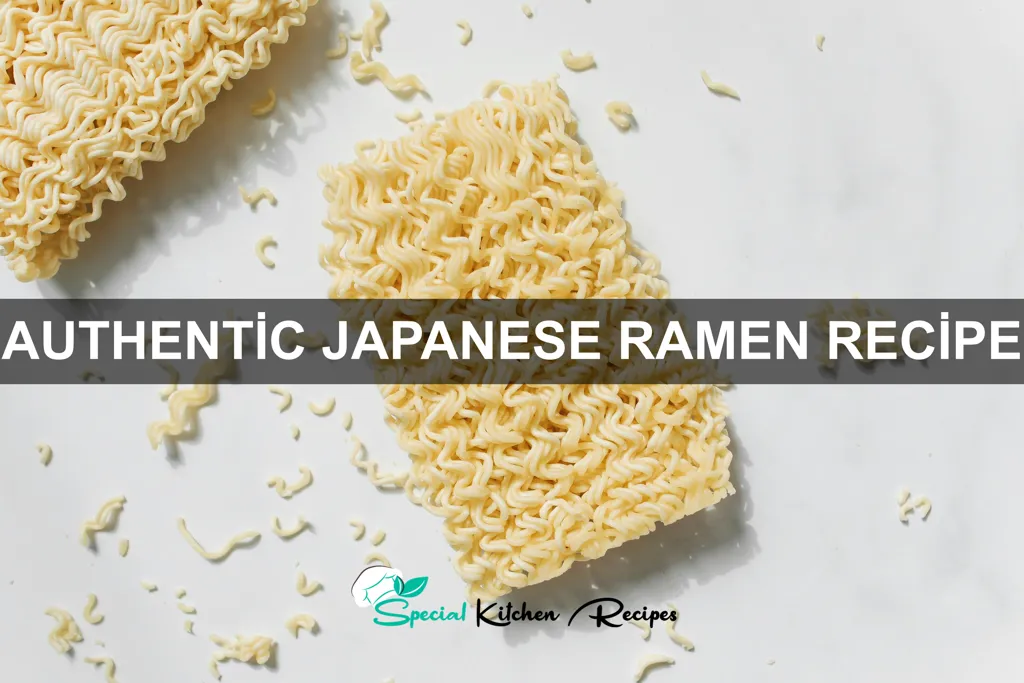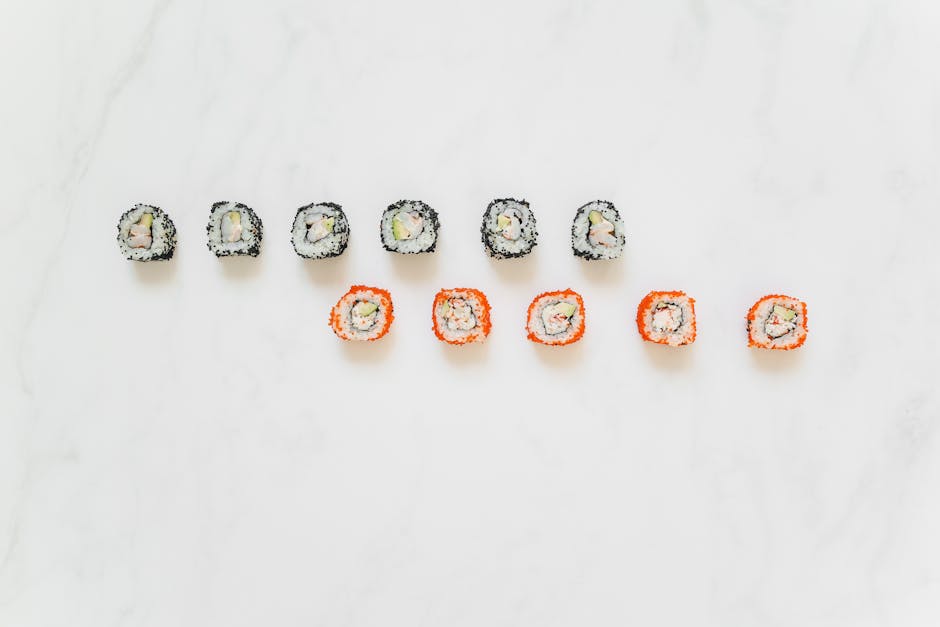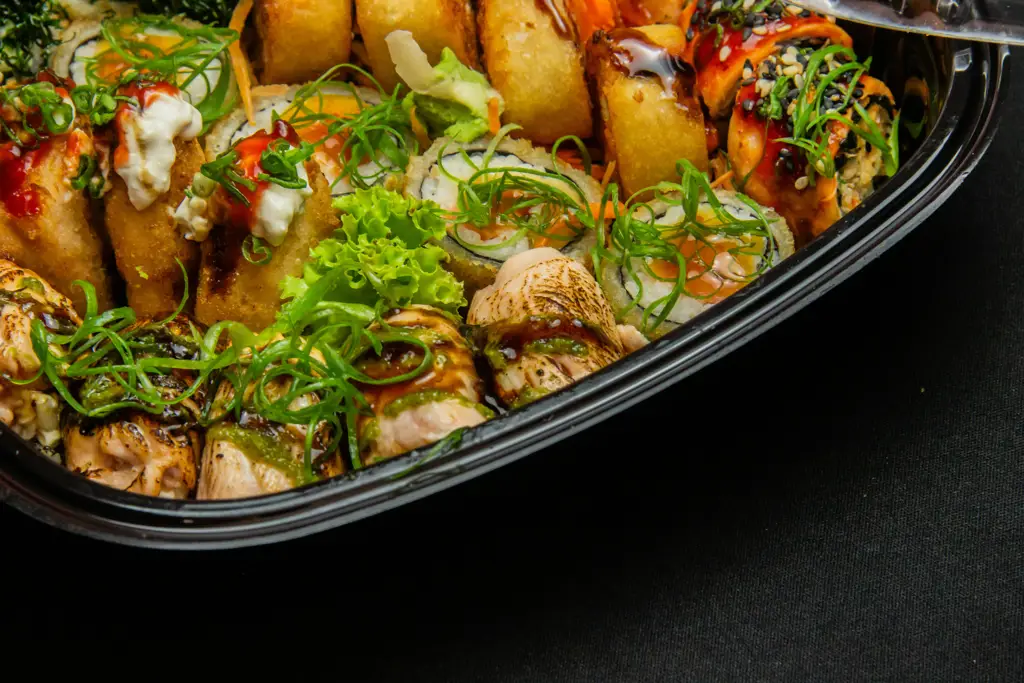Prepare to embark on a culinary journey to the heart of Japan with this authentic ramen recipe! Ramen, far from being a simple noodle soup, holds a significant place in Japanese cuisine and culture. Its origins are surprisingly multifaceted, with influences stretching back to Chinese noodle soups that arrived in Japan in the late 19th and early 20th centuries. Early versions were simpler, often consisting of wheat noodles in a soy sauce-based broth, but over time, regional variations emerged, leading to the diverse and delicious ramen landscape we see today.
The post-World War II era saw a boom in ramen’s popularity, with instant ramen’s invention further solidifying its place as a national staple. Momofuku Ando’s creation of instant ramen in 1958 revolutionized the food industry, not just in Japan, but globally. Today, billions of servings of instant ramen are consumed annually worldwide, a testament to its enduring appeal. Beyond its convenient instant form, however, lies a world of artisanal ramen shops, each fiercely proud of its unique broth, toppings, and noodle preparation methods. These shops often feature long queues, showcasing the dish’s continued popularity and cultural significance.
Ramen transcends simple sustenance; it’s a reflection of Japanese culinary artistry and regional diversity. The rich broths, painstakingly simmered for hours, are often the heart of the dish, ranging from the rich and savory tonkotsu (pork bone broth) to the lighter and clearer shoyu (soy sauce) and miso (fermented soybean paste) broths. The noodles themselves are also crucial, with varying thicknesses and textures adding to the overall experience. Toppings such as chashu (braised pork belly), marinated eggs (ajitama), bamboo shoots (menma), scallions, and nori (seaweed) add layers of flavor and texture, creating a symphony of taste in every bowl. This recipe aims to capture the essence of authentic ramen, allowing you to experience the depth and complexity that has captivated millions for decades.
Ingredients and Measurements
This recipe yields approximately 4 servings of authentic Japanese ramen. Accurate measurements are crucial for achieving the perfect balance of flavors. Use a kitchen scale for the most precise results, especially when measuring spices and liquids.
For the Broth (Tonkotsu):
- 2 kg Pork Bones (preferably a mix of spine, feet, and knuckle bones) – Choose bones with marrow for a richer broth.
- 1 large Onion, roughly chopped
- 4 cloves Garlic, smashed
- 2 pieces of Ginger (about 4 inches total), smashed
- 12 cups Water
- 2 tbsp Soy Sauce (Japanese Tamari preferred)
- 1 tbsp Mirin
- 1 tbsp Sake
- 1 tsp Salt
For the Noodles:
- 400g Dried Ramen Noodles (fresh noodles can be substituted, adjusting cooking time accordingly)
For the Toppings (adjust to your preference):
- 400g Chashu Pork (recipe below, or use pre-prepared)
- 4 Soft-Boiled Eggs (marinated in soy sauce, mirin, and sake for added flavor)
- 1 cup Menma (fermented bamboo shoots)
- 1 cup Nori Seaweed Sheets, cut into strips
- 2 Green Onions, thinly sliced
- 1-2 tbsp Sesame Seeds (optional)
- 1-2 tbsp Chili Oil (optional, for spice)
For the Chashu Pork (braised pork belly):
- 500g Pork Belly, skin removed and cut into 4-5 cm thick slices
- 1/2 cup Soy Sauce
- 1/4 cup Mirin
- 1/4 cup Sake
- 2 tbsp Sugar (brown sugar preferred)
- 1 inch piece of Ginger, thinly sliced
- 2 cloves Garlic, smashed
Important Note: The quantities of toppings are suggestions and can be modified based on individual preferences. Always taste and adjust the seasoning of the broth to your liking. The broth is best made a day ahead to allow the flavors to fully develop. This allows the collagen in the bones to break down, resulting in a richer, more flavorful broth.
Professional Recommendation: For a truly authentic experience, invest in high-quality ingredients. The difference in flavor will be noticeable.
Broth Preparation (including stock making and seasoning)
The foundation of any great ramen is its broth, and achieving authentic Japanese flavor requires meticulous attention to detail. This section details the process of creating a rich and flavorful tonkotsu (pork bone) broth, a popular choice for ramen. While other broths exist (like chicken or seafood), tonkotsu offers a deep, creamy texture crucial to the experience.
Stock Making: Begin with approximately 2 kg of pork bones (a mix of spine, feet, and knuckle bones is ideal). Rinse the bones thoroughly under cold water to remove any impurities. Place the bones in a large stockpot (at least 8 liters capacity) and cover with cold water. Bring to a boil over high heat, then immediately reduce the heat to a gentle simmer. Skim off any impurities that rise to the surface during this initial boil. This initial boil helps remove impurities and creates a cleaner tasting broth.
Simmering Process: Maintain a gentle simmer for at least 12 hours, ideally 18-24 hours. This long simmering process is crucial for extracting maximum flavor and collagen from the bones, resulting in the characteristic creamy texture of tonkotsu broth. Do not boil vigorously, as this will make the broth cloudy and less flavorful. Top up with water as needed to maintain the bone level. Every 6-8 hours, skim off any accumulated fat or foam from the surface.
Seasoning: Once the simmering is complete, strain the broth through a fine-mesh sieve lined with cheesecloth to remove all bone fragments. This step is vital for a smooth, clear final product. Return the strained broth to the stockpot. Now it’s time for seasoning. For a 8-liter batch of broth, start with approximately 100g of kansui (alkaline mineral water), which adds a characteristic taste and texture to the broth. Next, add 150g of soy sauce (preferably a high-quality Japanese soy sauce), 50g of mirin (sweet rice wine), and 20g of salt. Adjust salt to taste, remember that you can always add more but not less.
Flavor Enhancement (Optional): To further enhance the depth of flavor, you can add aromatics during the simmering process. Consider adding a few pieces of ginger, a couple of scallions, or a small piece of kombu (kelp) during the last few hours of simmering. Experiment with different aromatics to find your preferred flavor profile. Remember to remove these aromatics before straining.
Final Adjustments: After seasoning, taste the broth and adjust seasoning as necessary. You can use a refractometer to measure the salinity and adjust accordingly to your preferred level. Allow the broth to cool completely before storing. The broth will thicken further as it cools. Store in the refrigerator for up to 5 days or freeze for longer storage.
Important Note: The timing and quantities provided are guidelines. Adjustments may be needed depending on the type and quantity of bones used, and your personal preference. The key is patience and attention to detail – the longer you simmer, the richer and more flavorful your broth will be.
Tare Preparation (including flavor base adjustments)
The tare, or flavor base, is the heart and soul of your ramen. A well-crafted tare elevates the entire bowl, balancing richness, umami, and subtle nuances. For this recipe, we’ll focus on a classic shoyu (soy sauce) tare, but feel free to adapt it to your preferences.
Ingredients:
- 1 cup (240ml) high-quality Japanese soy sauce (e.g., Tamari or a dark soy sauce for deeper color)
- 1/2 cup (120ml) mirin (sweet rice wine)
- 1/4 cup (60ml) sake (Japanese rice wine)
- 1/4 cup (60ml) dashi (Japanese fish stock – kombu and bonito based is ideal)
- 2 tablespoons (30g) sugar (adjust to your sweetness preference)
- 1 tablespoon (15ml) rice vinegar (adds brightness and acidity)
- 1 clove garlic, minced
- 1 piece (1 inch) ginger, minced
- Optional: 1-2 dried shiitake mushrooms, rehydrated and finely chopped (adds depth of umami)
Instructions:
1. In a small saucepan, combine all ingredients. Ensure the minced garlic and ginger are finely chopped to prevent a gritty texture in the final tare.
2. Bring the mixture to a simmer over medium heat. Do not boil vigorously. Gentle simmering allows the flavors to meld without burning the ingredients.
3. Reduce the heat to low and simmer for 15-20 minutes, or until the tare has slightly thickened and the flavors have deepened. Stir occasionally to prevent sticking.
4. Remove from heat and strain the tare through a fine-mesh sieve or cheesecloth to remove solids. This step ensures a smooth and elegant final product.
5. Allow the tare to cool completely before using. Store in an airtight container in the refrigerator for up to a week.
Flavor Base Adjustments:
For a richer, more savory tare: Increase the amount of soy sauce and/or add a tablespoon of oyster sauce or fish sauce. For a sweeter tare: Increase the amount of mirin and/or sugar. For a more acidic tare: Add more rice vinegar or a splash of lemon juice. For a spicier tare: Add a pinch of chili flakes or a dash of your favorite chili oil. Experiment and find your perfect balance! Remember to taste and adjust seasonings as needed throughout the simmering process.
Professional Recommendation: Start with the base recipe and make small adjustments to your liking. Keep tasting and noting the changes to develop your signature tare. High-quality ingredients are key to a delicious ramen broth.
Noodle Preparation (including cooking time and texture)
The noodles are the backbone of any ramen, and achieving the perfect texture is crucial for an authentic experience. For this recipe, we’ll be using fresh ramen noodles, which offer a superior taste and texture compared to dried varieties. You can find fresh ramen noodles at most Asian grocery stores, often in the refrigerated section. Look for noodles specifically labeled for ramen, as they are typically thicker and more robust than other types of fresh noodles.
The quantity of noodles will depend on the number of servings you’re making. A general guideline is approximately 150-200 grams of fresh ramen noodles per person. For this recipe, we’ll assume you’re making two servings, requiring 300-400 grams of noodles in total. Adjust this amount according to your needs and appetite.
Bring a large pot of water (approximately 6-8 cups) to a rolling boil. Add a pinch of salt to the boiling water – this helps season the noodles and prevents them from sticking together. Do not add oil to the boiling water, as this can inhibit the noodles from absorbing the broth’s flavour.
Once the water is boiling vigorously, gently add the noodles, ensuring they are fully submerged. Stir them gently to prevent sticking. The cooking time for fresh ramen noodles is typically between 1-2 minutes. Overcooked noodles will become mushy and lose their pleasant chewiness. Undercooked noodles will be too firm and unpleasant to eat.
To determine doneness, taste-test a noodle after about 1 minute. They should be tender but still have a slight bite to them – this is known as *al dente*. If they are still too firm, continue cooking for another 15-30 seconds, checking frequently. Once they reach the desired texture, immediately remove them from the boiling water using a strainer or tongs. Quickly rinse the noodles under cold running water to stop the cooking process and prevent them from sticking.
Properly cooked ramen noodles should be firm yet springy, with a satisfying chew. Avoid overcooking, as this will result in a less enjoyable eating experience. Once the noodles are rinsed, set them aside until you are ready to assemble your ramen bowls. Do not let them sit for too long, as they may become gummy.
Toppings Preparation (including slicing, cooking, and preparation of various toppings)
The success of your authentic Japanese ramen hinges not just on the broth and noodles, but also on the carefully prepared toppings. This section details the preparation of several classic ramen toppings. Remember, freshness and quality ingredients are paramount.
Chashu (Braised Pork Belly): For approximately 4 servings, use 500g of pork belly, skin scored. Sear the pork belly in a hot pan with 2 tbsp of vegetable oil until golden brown on all sides. In a large pot, combine the seared pork belly with 4 cups of dashi (Japanese fish stock), 1/2 cup of soy sauce, 1/4 cup of mirin (sweet rice wine), 1/4 cup of sake, 2 cloves of garlic (minced), 1 piece of ginger (sliced), and 2 star anise. Bring to a simmer, cover, and braise for 2-3 hours, or until the pork is incredibly tender. Remove the pork, let it cool slightly, and then slice thinly against the grain. Reserve the braising liquid for later use in the broth if desired.
Ajitsuke Tamago (Marinated Soft Boiled Eggs): Gently place 4 eggs in a saucepan and cover with cold water. Bring to a boil, then immediately remove from heat and cover for 6 minutes. Immediately transfer the eggs to an ice bath to stop the cooking process. Peel the eggs carefully. For the marinade, whisk together 1/4 cup soy sauce, 2 tbsp mirin, 1 tbsp sake, and 1 tbsp sugar. Submerge the peeled eggs in the marinade and refrigerate for at least 4 hours, or preferably overnight, for optimal flavor infusion. The yolks should be a rich, creamy orange.
Menma (Fermented Bamboo Shoots): You can purchase pre-fermented menma from Asian grocery stores. If using canned menma, rinse thoroughly to remove excess saltiness. Then, simply slice them into thin, bite-sized pieces. Avoid over-slicing; maintain a nice texture.
Nori (Dried Seaweed Sheets): Use high-quality nori sheets. Cut them into halves or quarters, depending on your preference. Do not cut them too early, as they may become brittle.
Spring Onions (Scallions): Thinly slice 2-3 spring onions, separating the white and green parts for visual appeal. The white parts can be added directly to the broth, while the green parts serve as a garnish. Use sharp scissors or a very sharp knife for clean cuts.
Other Toppings: Consider adding other toppings like bean sprouts (blanched), sliced shiitake mushrooms (sautéed), or corn kernels (cooked). Remember to maintain a balance of flavors and textures in your final ramen bowl.
Important Note: Prepare all toppings in advance to ensure they are ready when you are ready to assemble your ramen bowls. This will expedite the process and guarantee the best possible quality and presentation.
Assembly and Plating: The Art of the Ramen Bowl
The final stage, assembling and plating your ramen, is crucial to achieving an authentic presentation and dining experience. It’s not just about throwing ingredients into a bowl; it’s about layering flavors and textures for a visually appealing and delicious result.
Begin by warming your ramen bowls. This prevents the broth from cooling too quickly. You can do this by briefly rinsing them with hot water or placing them in a preheated oven at a low temperature (around 100°C/212°F) for a few minutes.
Broth is King: Pour approximately 400-500ml of your freshly made ramen broth into each warmed bowl. The quantity will depend on the size of your bowl and your preference. Don’t overfill; leave some space for the other ingredients.
Noodle Placement: Gently add your perfectly cooked noodles. Aim for approximately 150-200g of noodles per bowl. Avoid overcrowding; this will make the noodles clump together and affect the texture. Using tongs is recommended for precise placement.
Strategic Layering: Next, add your toppings strategically. Start with larger items like chashu pork (approximately 100-150g per bowl, sliced thinly), then add your soft-boiled eggs (halved, 1-2 per bowl), and any other substantial toppings like bamboo shoots (menma) (approximately 30-50g per bowl) or kikurage mushrooms. This creates visual appeal and prevents the smaller toppings from getting lost.
Garnish Gracefully: Finally, add your smaller garnishes. This includes thinly sliced scallions (approximately 1-2 tablespoons, chopped), nori seaweed sheets (cut into quarters or halves, 1-2 per bowl), and toasted sesame seeds (a generous sprinkle). Consider the color contrast; the green of the scallions, the black of the nori, and the beige of the sesame seeds create a visually stunning effect.
Professional Tip: Arrange the toppings in a visually pleasing manner. Think about creating small piles or patterns instead of just dropping everything in randomly. A neatly presented bowl enhances the overall dining experience.
Temperature Control: Serve immediately to ensure the broth remains hot and the noodles are perfectly textured. Avoid letting the ramen sit for too long, as this can negatively impact the flavors and textures.
Presentation Matters: A beautifully presented bowl of ramen is as important as the taste. Take your time, and enjoy the process of creating a masterpiece that is both delicious and visually stunning. Remember, attention to detail elevates your ramen from a simple meal to a culinary experience.
Recommendations
For the best Authentic Japanese Ramen experience, we highly recommend using fresh, high-quality ingredients. The broth is the heart of the ramen, so take your time to properly simmer the bones and aromatics for a rich and flavorful base. Don’t rush the process! The longer you simmer, the richer the flavor will become.
Serving Suggestions: This recipe yields approximately 4 servings of delicious ramen. Serve immediately after cooking for the best texture and taste. Garnish generously with your favorite toppings. We suggest thinly sliced chashu pork (braised pork belly), soft-boiled eggs (ajitama), menma (fermented bamboo shoots), scallions, nori (seaweed sheets), and bean sprouts. Feel free to experiment with other toppings like corn, mushrooms, or spinach.
Storage: Leftover broth can be stored in an airtight container in the refrigerator for up to 3 days. Reheat gently on the stovetop before serving. Cooked noodles should be stored separately and reheated separately as well to prevent them from becoming mushy. Do not store toppings with the broth or noodles.
Complementary Dishes: This ramen recipe pairs beautifully with a variety of Japanese appetizers and side dishes. Consider serving it with gyoza (pan-fried dumplings), edamame (steamed soybeans), or a simple side salad with a light ginger dressing. A small bowl of tsukemono (Japanese pickles) will also add a nice contrasting flavor to your meal.
Nutritional Information (per serving, approximate): Calories: Approximately 600-800 (depending on toppings and ingredients used). This is a rough estimate and can vary significantly based on the specific ingredients and portion sizes. The ramen is a good source of protein from the broth and toppings, carbohydrates from the noodles, and various vitamins and minerals from the vegetables. For a more precise nutritional breakdown, we recommend using a nutrition calculator and inputting your specific ingredients and quantities.
Important Note: This recipe provides a guideline. Feel free to adjust the seasoning and ingredients to your personal preference. Experiment with different types of noodles, broths, and toppings to create your own unique ramen masterpiece!





